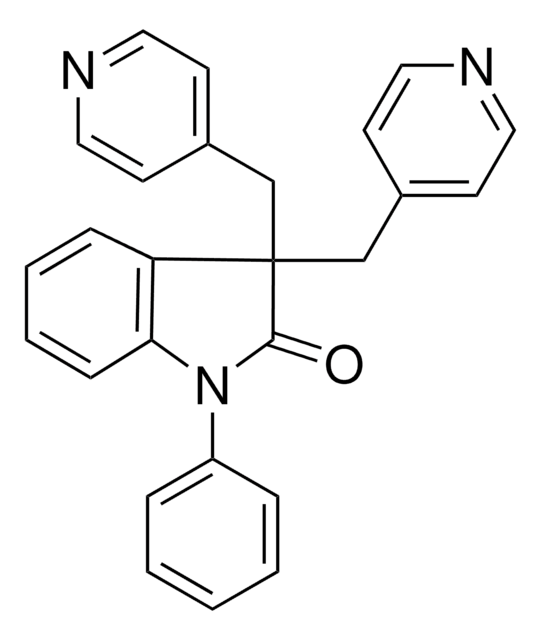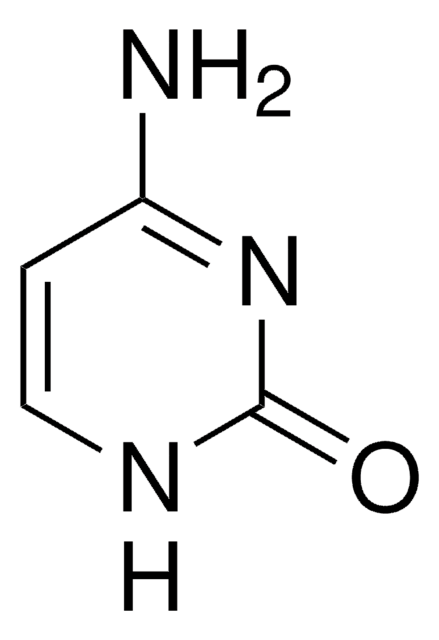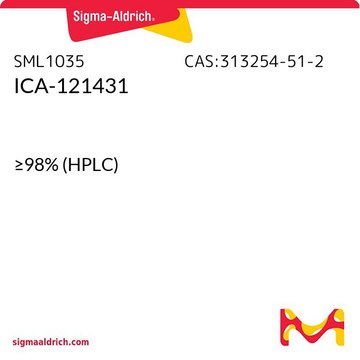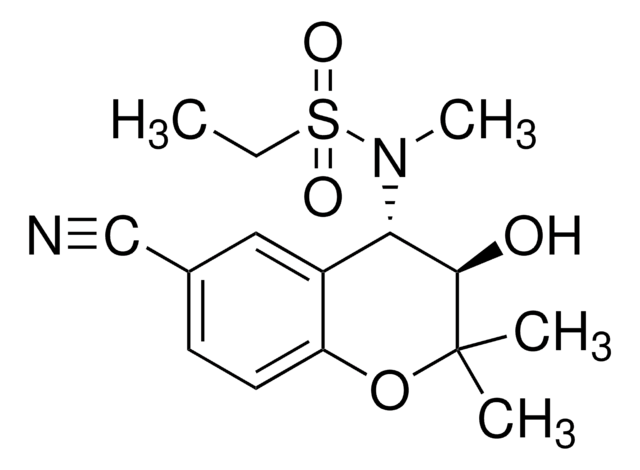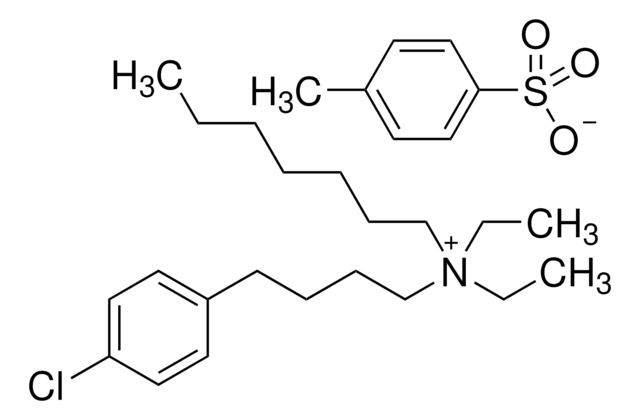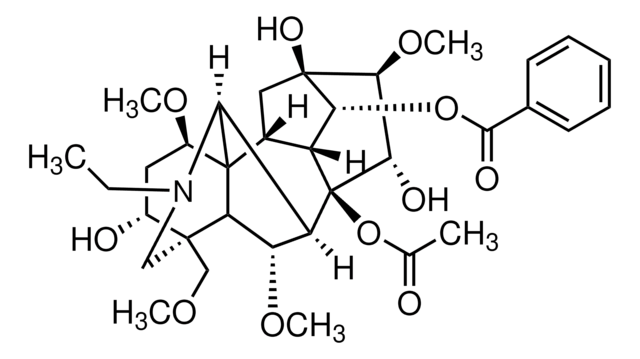X2254
XE-991
≥98% (HPLC), powder, KCNQ channel blocker
Synonyme(s) :
10,10-bis(4-pyridinylmethyl)-9(10H)-anthracenone
About This Item
Produits recommandés
Nom du produit
XE-991, ≥98% (HPLC)
Niveau de qualité
Essai
≥98% (HPLC)
Couleur
white to beige
Solubilité
DMSO: >20 mg/mL
Auteur
Merck & Co., Inc., Kenilworth, NJ, U.S.
Température de stockage
2-8°C
Chaîne SMILES
O=C1c2ccccc2C(Cc3ccncc3)(Cc4ccncc4)c5ccccc15
InChI
1S/C26H20N2O/c29-25-21-5-1-3-7-23(21)26(17-19-9-13-27-14-10-19,18-20-11-15-28-16-12-20)24-8-4-2-6-22(24)25/h1-16H,17-18H2
Clé InChI
KHJFBUUFMUBONL-UHFFFAOYSA-N
Application
Actions biochimiques/physiologiques
Caractéristiques et avantages
Mention d'avertissement
Warning
Mentions de danger
Conseils de prudence
Classification des risques
Eye Irrit. 2 - Skin Irrit. 2 - STOT SE 3
Organes cibles
Respiratory system
Code de la classe de stockage
11 - Combustible Solids
Classe de danger pour l'eau (WGK)
WGK 3
Point d'éclair (°F)
Not applicable
Point d'éclair (°C)
Not applicable
Faites votre choix parmi les versions les plus récentes :
Déjà en possession de ce produit ?
Retrouvez la documentation relative aux produits que vous avez récemment achetés dans la Bibliothèque de documents.
Les clients ont également consulté
Notre équipe de scientifiques dispose d'une expérience dans tous les secteurs de la recherche, notamment en sciences de la vie, science des matériaux, synthèse chimique, chromatographie, analyse et dans de nombreux autres domaines..
Contacter notre Service technique